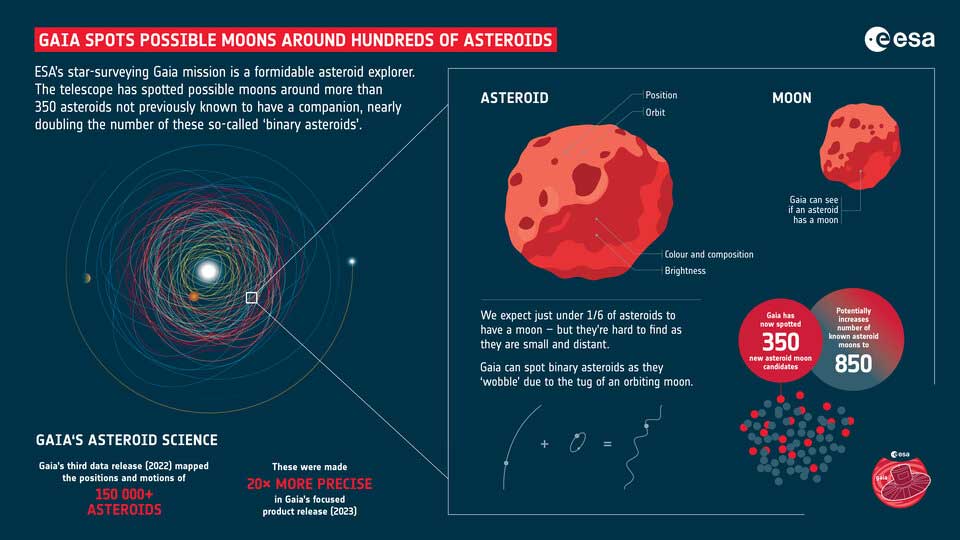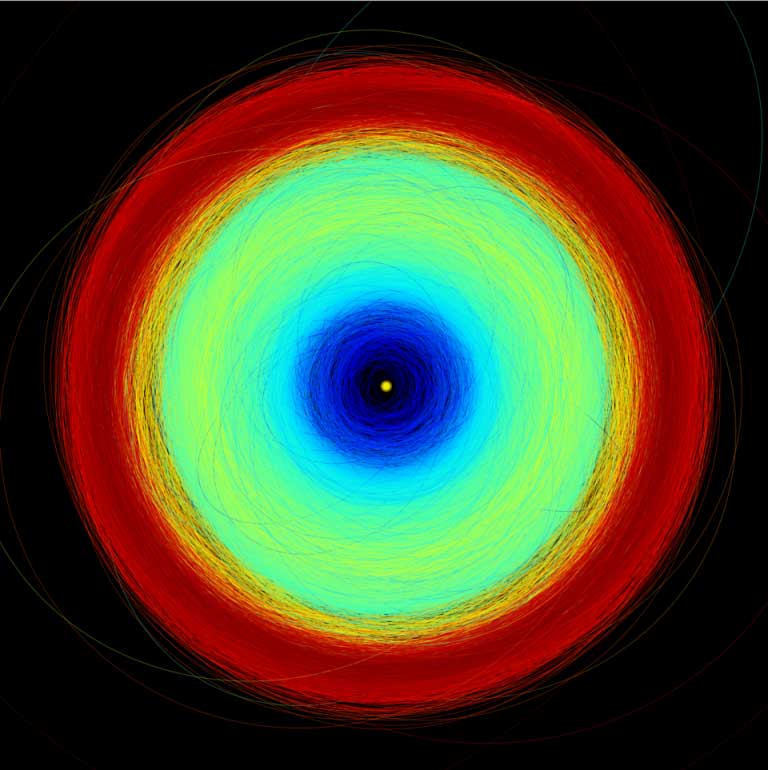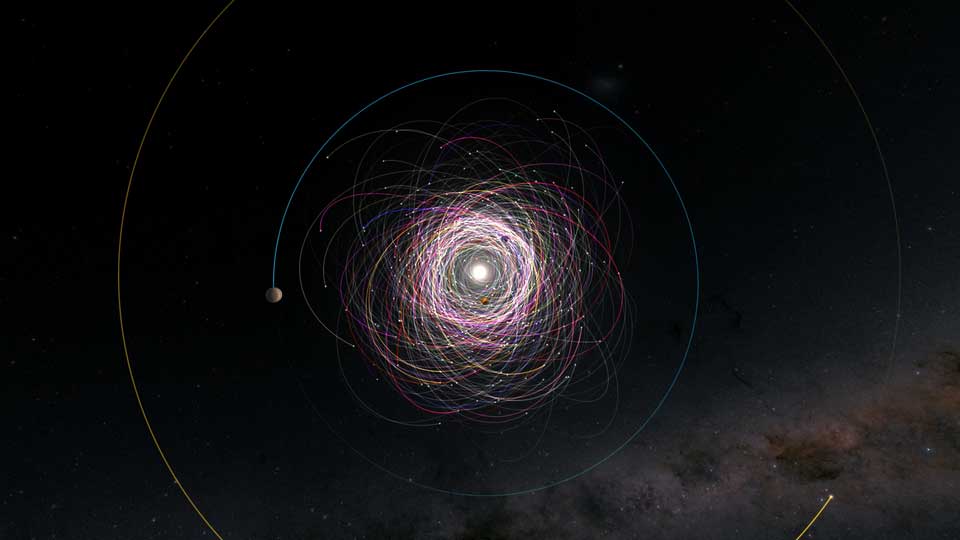The European Space Agency’s Gaia star-gazing mission has once again proven its ability to explore asteroids, discovering potential moons around more than 350 asteroids that are not known to have moons.
Gaia has previously surveyed asteroids known to have moons – so-called “binary asteroids” – and confirmed that telltale signs of these tiny moons showed up in the telescope’s ultra-precise astrometry data. But this new discovery proves that Gaia can conduct “blind” searches to find entirely new candidates, too.
“Binary asteroids are difficult to detect because they are mostly very small and far away from us,” says Luana Liberato of the Côte d’Azur Observatory in France, lead author of the new study. “Although we expected just under one-sixth of asteroids to have a companion, so far we have only detected 500 of the million known asteroids in binary systems. But this discovery shows that there are many asteroid satellites just waiting to be found.”

Gaia has discovered possible moons around hundreds of asteroids. ESA
If this new discovery is confirmed, it would add 352 more binary system candidates to the list of asteroids with moons, nearly doubling the known number of asteroids with moons.
Asteroids are fascinating objects and contain unique clues about the formation and evolution of the solar system. Binary asteroid systems are even more fascinating, allowing us to study how different bodies form, collide, and interact in space.
With its unique all-sky scanning capabilities, Gaia has made a number of important asteroid discoveries since its launch in 2013.
In its data release 3, Gaia accurately determined the positions and motions of more than 150,000 asteroids—so accurately that scientists were able to dig deeper and look for asteroids that exhibited a characteristic “wobble” caused by the tug of an orbiting companion (a mechanism common in binary stars). Gaia also collected data on the asteroids’ chemistry, compiling the largest collection ever of asteroid “reflectance spectra” (light curves that reveal an object’s color and composition).

Asteroids in Gaia data release 3. ESA
More than 150,000 orbits determined in the Gaia 3 data release were refined and made 20 times more accurate in the Focused Product release last year. More asteroid orbits are expected in the upcoming Gaia 4 data release (not expected until mid-2026).
“Gaia has proven itself to be an outstanding asteroid explorer and is working hard to uncover the secrets of space both in and beyond our Solar System,” said Timo Prusti, Gaia Project Scientist at ESA. “This discovery highlights that each Gaia data release is a major step forward in improving the quality of the data and demonstrates the amazing new science that has been made possible by this mission.”
ESA will continue to study the binary asteroids with the upcoming Hera mission, scheduled to launch later this year. Hera will be a follow-up to NASA’s DART mission, which encountered Dimorphos, a moon orbiting the asteroid Didymos, in 2022 as an asteroid deflection test to conduct a post-impact survey of Dimorphos. It will be the first probe to encounter a binary asteroid system.

20 times more accurate: Gaia maps more than 150,000 asteroid orbits. ESA
Gaia helped astronomers see the shadow cast by Didymos as it passed in front of more distant stars in 2022, an observation method known as stellar occultation. The feasibility of this method has been dramatically improved by Gaia’s asteroid orbits and ultra-precise star maps in recent years, proving the mission’s enormous value to solar system exploration.
“Binary Asteroid Candidates in Gaia DR3 Astrometry” by Liberato et al. (2024) accepted for publication 8 August 2024 in Astronomy & Astrophysics. doi.org/10.1051/0004-6361/202349122
The European Space Agency’s Gaia space telescope was launched on 19 December 2013 and has been observing the sky since 2014.




